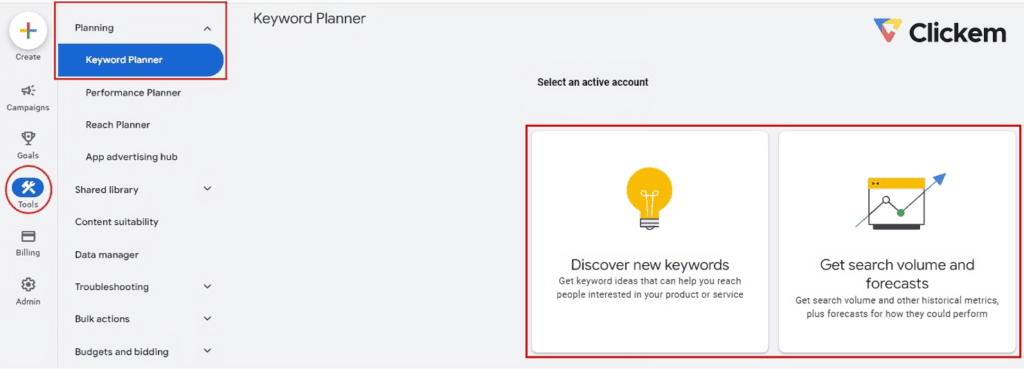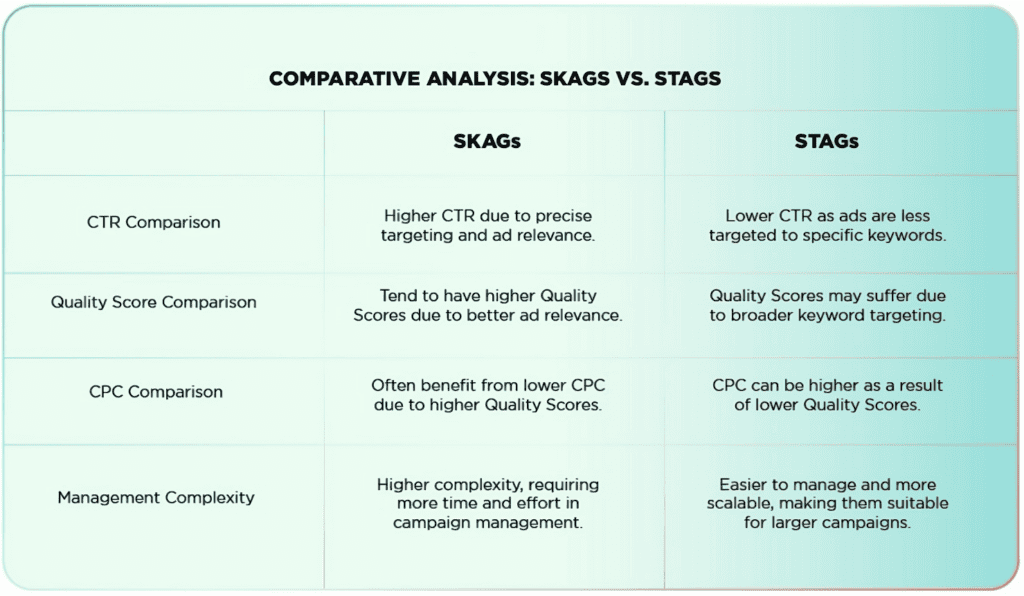
Introduction
Keyword research is the backbone of successful Google Ads campaigns. In 2024, it’s more crucial than ever to master this skill if you want to stay ahead in the competitive digital advertising landscape. This guide will walk you through the latest strategies and tools to supercharge your keyword research for Google Ads.
Why Keyword Research Matters
Effective keyword research can make or break your Google Ads campaigns. It helps you understand what your target audience is searching for and how they’re looking for it.
Find the right keywords. You can then create better ads. This will improve your quality score. Ultimately, you’ll get more value from your ads.
Understanding Search Intent
Are they looking to buy something, find information, or compare options? Understanding intent helps you choose keywords that align with your campaign goals.
There are four main types of search intent: informational, navigational, commercial, and transactional. Informational searches seek answers or knowledge. For navigational queries, look for specific websites or pages. Commercial intent involves researching products or services before purchase. Transactional searches indicate a readiness to buy or take action.
Tailor your keyword strategy to match the intent and align it with your campaign objectives. This will help you attract the right audience and improve your conversion rates.

Starting Your Keyword Research
Begin your keyword research by brainstorming. Put yourself in your customers’ shoes and consider what they might search for. Think about your products, services, and brand name. Also, consider your competitors and the common problems your offerings solve. Create a list of these initial ideas. They’ll serve as a springboard for in-depth keyword research using specialized tools.
Leveraging Google Keyword Planner
Google Keyword Planner is a free tool that is essential for any Google Ads campaign. It provides valuable data on search volume, competition, and suggested bid prices. Here’s how to use it effectively:
-
- Access Keyword Planner through your Google Ads account
-
- Enter your seed keywords or website URL
-
- Review the suggested keywords and their metrics
-
- Filter results based on relevance, search volume, and competition
-
- Export your findings for further analysis
Don’t just rely on the most popular keywords. Look for long-tail keywords with lower competition but high relevance to your business. These can often lead to more qualified traffic at a lower cost.

Exploring Other Keyword Research Tools
While Google Keyword Planner is great, it shouldn’t be your only resource. Other tools can provide additional insights and keyword ideas. Some popular options include SEMrush, Ahrefs, Moz Keyword Explorer, Ubersuggest, and AnswerThePublic. Each tool has strengths, so consider using a combination to get a well-rounded view of your keyword landscape. Many offer free trials, allowing you to test them before committing to a subscription.

Analyzing Competitor Keywords
Your competitors can be a goldmine of keyword ideas. Analyze their websites, ads, and content to see what keywords they’re targeting. Tools like SEMrush and SpyFu can help you uncover your competitors’ most valuable keywords. Don’t just copy their strategy, though. Use this information to identify gaps and opportunities they might be missing. This can help you carve out your unique space in the market.

Staying Up-to-Date with Keyword Trends
Keyword popularity and relevance can change quickly. Stay on top of trends in your industry by:
-
- Following industry news and blogs
-
- Monitoring social media conversations
-
- Using Google Trends to track keyword popularity over time
-
- Regularly reviewing and updating your keyword lists
Stay informed about trends and changes in consumer behavior. This will help you adapt your keyword strategy and keep it effective.
Long-Tail Keywords
Long-tail keywords are longer, more specific phrases that users search for. They often have lower search volume but can be incredibly valuable for your Google Ads campaigns. These keywords typically have less competition and higher conversion rates. Focus on finding long-tail keywords that align with your products or services.
Use tools like Answer the Public or look at Google’s “People also ask” section to find long-tail keyword ideas. These phrases often reflect specific user intents, allowing you to create highly targeted ads and landing pages.

Negative Keywords: Refining Your Targeting
Negative keywords are just as important as the keywords you’re targeting. They help prevent your ads from appearing for irrelevant searches, saving money and improving your ad relevance. Start by brainstorming terms that are related to your keywords but aren’t relevant to your business.
For example, if you sell high-end watches, you might add “cheap” or “free” as negative keywords. Regularly check your search terms report in Google Ads. It will show you irrelevant terms triggering your ads. Add those terms to your negative keyword list.

Organizing Keywords into Ad Groups
Effective keyword organization is crucial for successful Google Ads campaigns. Group your keywords into tightly themed ad groups. This allows you to create more relevant ads and landing pages, improving your Quality Score and ad performance.
Here’s a step-by-step process for organizing your keywords:
-
- Identify main themes or categories related to your products or services
-
- Group closely related keywords under each theme
-
- Create specific ad copy that matches the keywords in each group
-
- Develop landing pages that align with each ad group’s theme
-
- Monitor performance and refine your groups as needed
Remember, smaller, more focused ad groups often perform better than large, broad ones. Aim for 10-20 closely related keywords per ad group for optimal management and performance.

Understanding Keyword Match Types
Google Ads offers different keyword match types that determine how closely a user’s search query needs to match your keyword for your ad to show. The main match types are:
-
- Broad Match: Triggers your ad for searches that include any words in your keyword, in any order, and related variations
-
- Phrase Match: Shows your ad for searches that include the meaning of your keyword
-
- Exact Match: Displays your ad for searches that have the same meaning or intent as your keyword
Each match type has pros and cons. A broad match can help you reach a wider audience but may lead to irrelevant clicks. An exact match provides the most control but may limit your reach. Test different match types to find the right balance for your campaigns.

Leveraging Local Keywords
Local keywords are essential for businesses targeting specific geographic areas. Incorporate location-specific terms into your keyword strategy. This could include city names, neighborhoods, or local landmarks. Use Google’s Location targeting options with these keywords to ensure your ads reach the right audience.
Consider seasonal trends and local events that influence search behavior in your area. A beach rental company might target summer activity keywords in their location during peak tourist season.
Monitoring and Adjusting Your Keyword Strategy
Keyword research isn’t a one-time task. It’s an ongoing process that requires regular monitoring and adjustment. Track your keyword performance in Google Ads and make data-driven decisions to optimize your campaigns.
Pay attention to metrics like:
-
- Click-through rate (CTR)
-
- Conversion rate
-
- Cost per click (CPC)
-
- Quality Score
-
- Search impression share
Use this data to identify underperforming keywords that must be paused or removed. Also, find high-performing keywords that could benefit from higher bids or more ad coverage.
Embracing Voice Search Optimization
With the rise of voice assistants, voice search is now crucial. Voice searches tend to be longer and more conversational. Include natural language phrases and question-based keywords in your research.
Think about how people might ask for your products or services verbally. For example, instead of “best pizza NYC,” a voice search might be “What’s the best pizza place near me in New York City?” Incorporate these longer, more natural phrases into your keyword strategy.

Conclusion
In 2024, mastering keyword research for Google Ads requires creativity, data analysis, and constant optimization.
A strong keyword strategy drives results. Understanding user intent, using research tools, and watching trends comes from understanding user intent. Review and refine your approach regularly; don’t be afraid to test new ideas. With persistence and the proper techniques, you’ll be well on your way to success with Google Ads.








